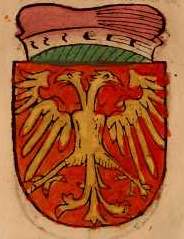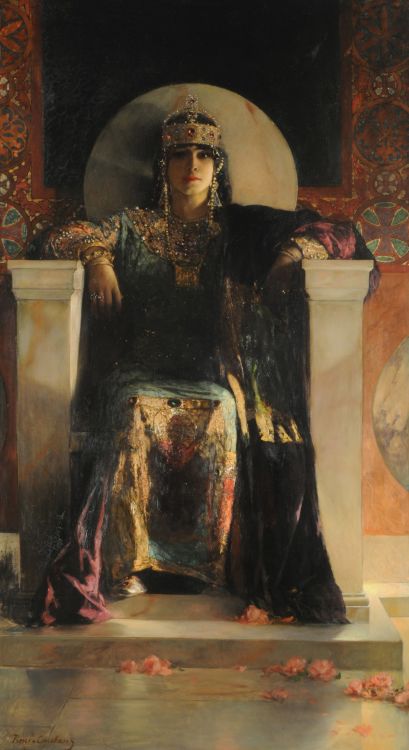Bevil
Bevil is a fragmented and weak kingdom, recently torn apart by civil war which is divided into the main rump state of the separate Kingdom of Bevil and new Kingdom of Kilt.
Bevil is the northern border of the old Fultonian Empire, and Bevilians are essentially Fultonian in culture, religion and language; however, they seem themselves as the true inheritors of the glory of the Ancient Fultonian Empire. While for years this was true and their power lasted for centuries, now Bevil is a petty state with an overweening and dysfunctional bureaucracy and nobility that is burdened by traditions and infighting that threatens its entire existence.
Bevil is a primarily mercantile nation with peasant farmers and pastoralists spreading east for about a 100 miles.
Structure
In the Bevil, until recently, the King is the sole and absolute ruler, and his power was regarded as having divine origin. After the Guar Conquest and Bevil's separation from Fultar, the King was considered the "living law", both lawgiver and administrator.
The Council was historically a powerful judicial and legislative, but has ceased to have real political and legislative authority. It remains as an honorary council with titular members and some remanent functions. Originally, the Council was the main forum of government after Bevil became a separate nation, and was made up of aristocrats who were given their position by the King. Created by Honoratin I immediately after the Guar Conquest, it was modelled on the Fultonian Senate. Although in practice the King could make any decision he wished, in theory he was supposed to consult the Council and particularly the smaller group of the most senior councilors known as the sacrum consistorium. In practice, a wise King or Queen would rely upon and utilize the Council, especially for matters of state importance - declarations of war, treaties of alliance, and so on. The Council, therefore, was primarily only an advisory body. It could, though, function as the highest court in the land in rare cases of high treason. King Honoratin VI, around Year of Iron 600, reduced the role of the Council even further, but it remains as an institution that serves the interests of the King.
While the government of the Bevil was headed and dominated by the King, but there were many other important officials who assisted in operating the finances, judiciary, military, and bureaucracy of a huge territory. Without elections, the ministers, senators, and councillors who governed the people largely acquired their position through imperial patronage or because of their status as large landowners. Government was multi-levelled based on the geographical division of the empire's population. Although corruption, rebellions, and invasions threatened the functioning of the system, and even caused its reduction in scale, the system nevertheless survived for centuries to become one of the most sophisticated apparatus of government seen in any empire in history.
This Bevilian bureaucracy had a distinct ability for adapting to the Kingdom's changing situations. The elaborate system of titulature and precedence gave the court prestige and influence. Officials were arranged in strict order around the emperor and depended upon the imperial will for their ranks. There were also actual administrative jobs, but authority could be vested in individuals rather than offices. The civil aristocracy is trivial by an aristocracy of nobility, and politics are dominated by competition between the civil and the military aristocracy.
The Bevilian Coat of Arms
History
Bevil was founded almost two thousand years ago when it was conquered and colonized by Fultar during the Years of the People, which lasted for over 500 years of republican government. After Fultar became an Empire, Bevil remained part of Fultar during the next 500 years until it was finally was separated from Fultar after the Guar Conquest.
Bevil saw itself as the continuation of the Fultonian Empire uncorrupted by the Guar, Celtic and other invasions. Bevil's borders and influence fluctuated through several cycles of decline and recovery, and were always dependent upon her naval strength. The essential Fultonian state continued and its religion and traditions were maintained and more calcified than in Fultar itself. The greatest of Bevil's leaders was Teoda II and her mother Teoda I. Over the past few centuries Bevil has competed with the Gildam Confederacy for supremacy of the seas and commerce.
In YR 898, the rebellion of the new Baron of Kilt in the Kingdom of Bevil formed a new independent Kingdom in southern Bevil, the Kindgom of Kilt.
The coronation of the new Baron of Kilt that led to sundering of Bevil was hot bed of deceit, intrigue and political games. Two major political battles raged. Various Bevilian nobles attempted to gain the new Baron’s support. The major faction were those that desired more autonomy from the King. A second major struggle was a battle between Bevil’s official Fultonian priests and the Druids over whether the new Baron of Kilt will support or oppose the Fultonian priests’s attempts to expel the Druids from Bevil. Nobles, priests and merchants from Bevil, Gilean, the various Celtic Lands of the Nation of Galletica and Fultar attended.
The coronation was a grand festival the likes many had never seen. The coronation was scheduled at the time of the annual fall fair and celebration of life. In the Baron of Kilt’s castle were hundreds of nobles and priests from various lands. The town of Kilt was overflowing with more than triple its normal population. Recently harvested fields filled with tents of merchants, gypsies, and contestants in the upcoming games of archery, wresting, jousting and bull riding. Actors, jugglers, musicians and thieves filled the streets and tent city.
On the first night of ballroom dancing the High Priestess of Hecate was poisoned and fell into convulsions on the floor. The diplomatic aid to a wood elven priestess Thistle and ally of the Druid, an elven knight Doust blurted out, "Die, bitch, die!" Thistle pretended to attempt to cure the priestess. The priestess survived the attack, the elven knight was tortured but never revealed who was behind the assassination, which ultimately succeeded later as the priestess was slain in her room.
At the end of the coronation the Baron of Kilt was convinced to not expel the Druids. Later in the fall, civil war broke out with the Baron of Kilt leading the rebel cause against King Androkin. Celts invaded and plundered Bevil in the north and pirates and the Gildam Confederacy attacked the Bevilian shipping industry. By the end of the year the rebels had formed a new Kingdom with the young Baron of Kilt as King.
Territories
Bevil's main areas of occupancy are the coastal cities, towns and villages, with few towns and no cities to the east.
Bevil extends its influence about a 100 miles to the east until it reaches primeval forests inhabited by Celtic tribes, demihumans, including a confederation of kingdoms of high elves, which are constantly at war with humanoids, primarily orcs, hobgoblins and goblins.
Bevil's border to north is the Dylack Swamp, and the independent mafia-city-states of the Chaotic Coast, home of slavery, smuggling, and piracy. To their north is the large, prosperous Celtic Kingdom known as Gilean.
Bevil's southern border is the Posprey Swamp and the Gildam Confederacy.
North above the forest are several other human kingdoms, including Barovia, an Eastern-European type area overrun by the undead and other evil forces, the Kozar Steep, the hilly home territory of an aggressive, tribal culture known as the Kozar (think the Balkans), which often allies itself with evil humanoids. Wandering gypsies travel all the way from these regions to Fultar.
Mythology & Lore
The people of Bevil largely follow the Fultonian Religion, but in a form truer to its origins. "Newer" Fultonian gods like Ohgma, the god of music and learning originally from the Celtic peoples, and Ram Kor the half-Guar god of war, are entirely absent. Tya Nehru, Sennia and Hantithenus still dominate, and Hecate is honored as an important goddess of magic and the night, rather than a evil force to be exterminated.
King Androkin lost the Barony of Kilt, turning Bevil into a mere rump state.
Neighboring Nations
Queen Teoda I
Queen Teoda II, was the greatest Bevilian monarch.






